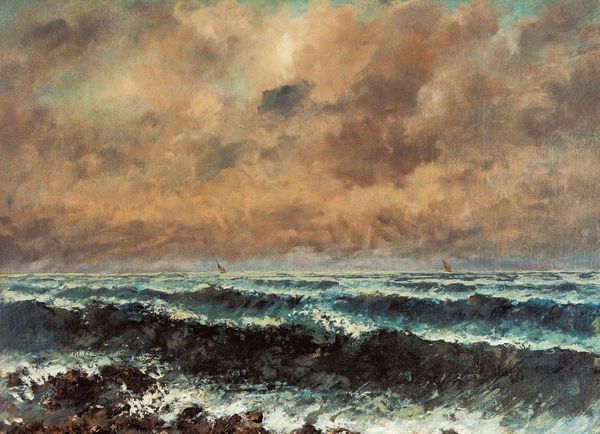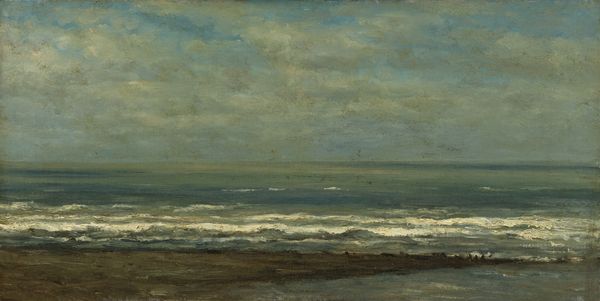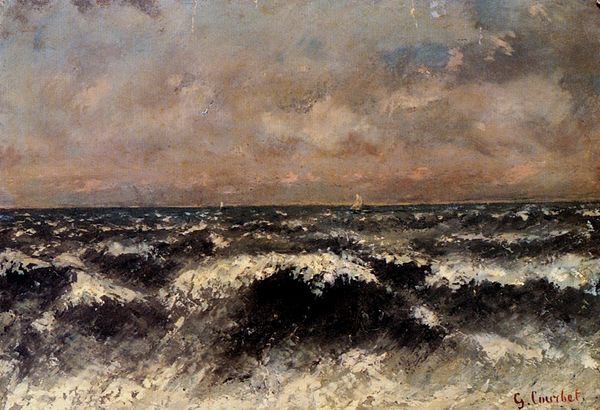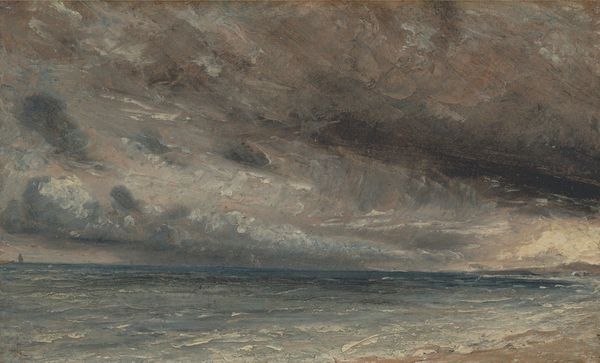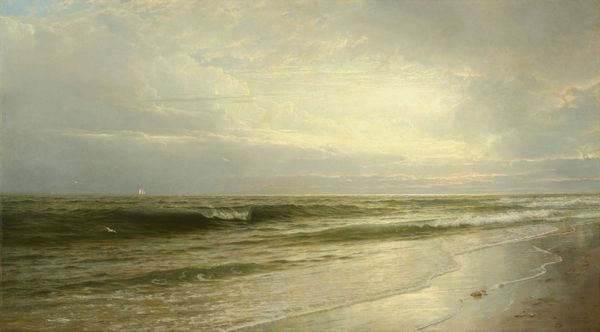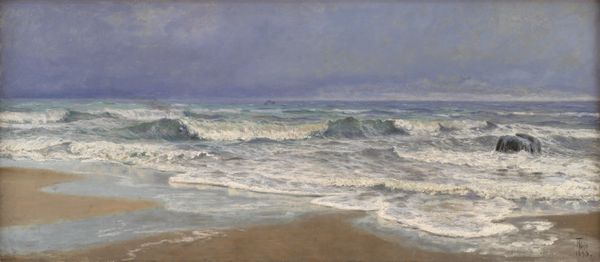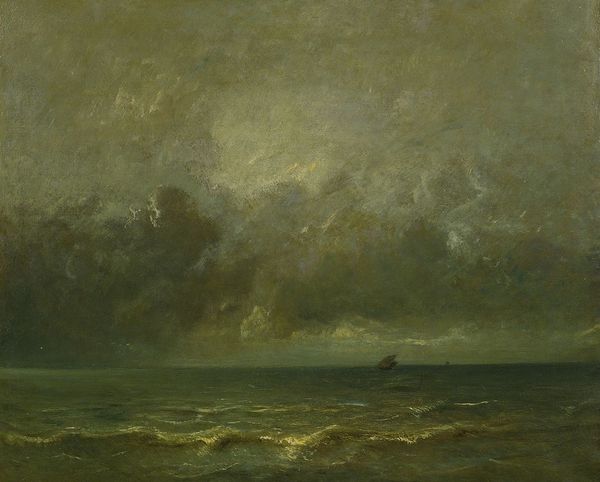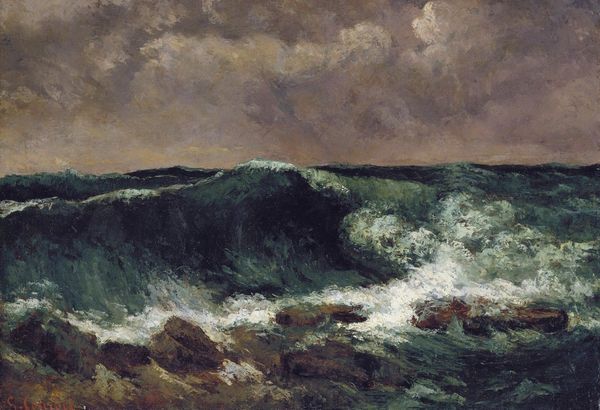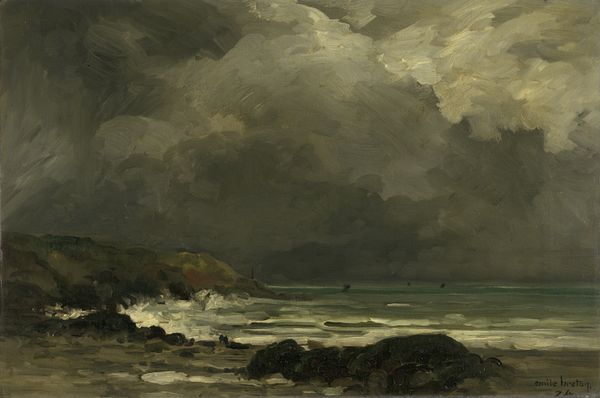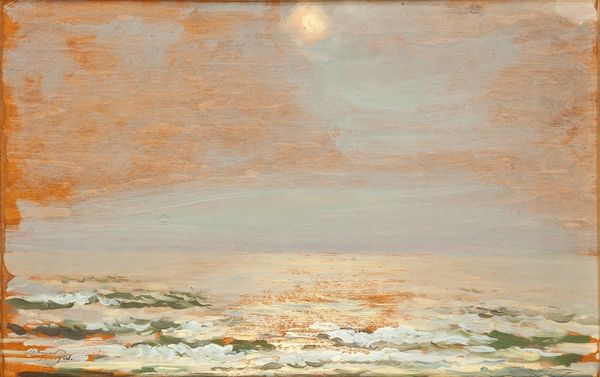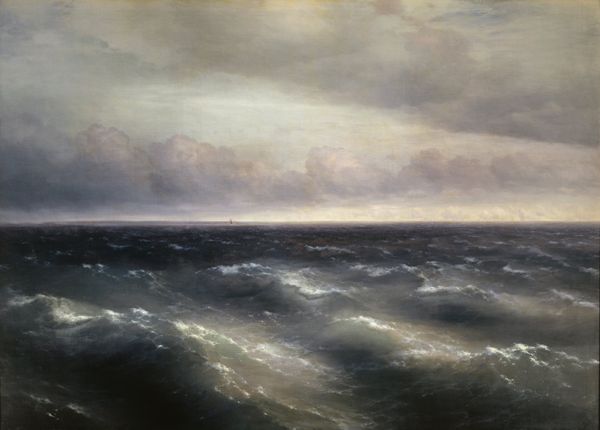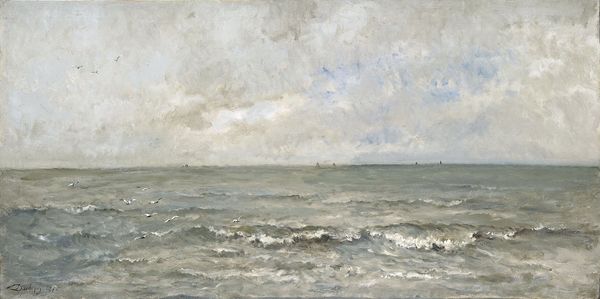
Copyright: Public Domain: Artvee
Editor: We're looking at Gustave Courbet's "Marine," created in 1869 using oil paint. The scene depicts a stormy sea, and I'm really struck by the raw energy he captures with the thick application of paint. What aspects of this work stand out to you? Curator: The materiality is really key here. Look at the impasto technique – the thick daubs of paint. It's not just about representing the sea; it's about the labor of painting itself. Think about where Courbet was in 1869 - towards the end of his career, embroiled in political controversies like the destruction of the Vendôme Column. Could this expressive application of paint, this almost violent working of the canvas, reflect the turbulence of the period and the artist’s own conflicted relationship with societal upheaval? Editor: That's a perspective I hadn't considered. So, the physical act of creating the painting mirrors the societal disruption of the time? Curator: Precisely. Also, consider plein-air painting; he removed painting from the academy and brought it outside into a location that now it part of the global trade. What kind of implications do you think his decision would bring? Editor: That changes my perception entirely. Now I see the painting as less about Romantic expression and more about a tangible record of labor and societal tensions embedded in the very material of the artwork itself, and makes the work about democratising art by moving the practice outside. Curator: Exactly. We see the social history embedded within the textures and strokes. Editor: I definitely have a new appreciation for considering art beyond just its aesthetic qualities, recognizing the social and material processes at play. Thank you for sharing the history behind the artistic material of this era.
Comments
No comments
Be the first to comment and join the conversation on the ultimate creative platform.
